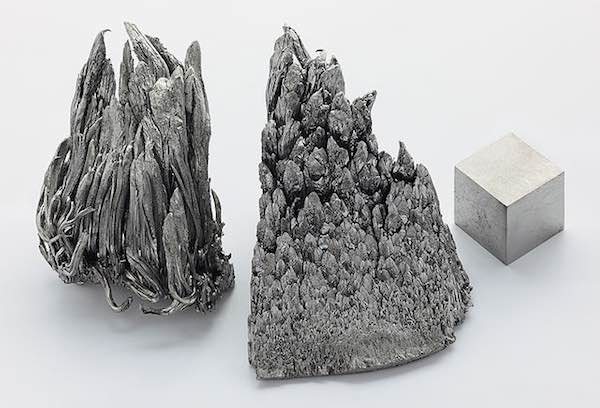
[Image above] Samples of rare-earth element yttrium. Credit: Museum für Naturkunde Berlin; Flickr CC BY-NC-ND 2.0
If you’re concerned about supply of rare-earth elements—a group of 17 elements indispensable to current and future technologies—you might want to commence the celebrations.
Scientists reportedly discovered a massive deposit of rare-earth elements in the western North Pacific Ocean, off the coast of Minamitorishima Island in Japan, in 2013. And now, they report that not only is the deposit sufficiently massive in terms of its estimated rare-earth resource supply, but that recovery of said minerals is rather feasible.
The scientists estimate that the amount of rare-earth oxides stashed in the “most promising area” of the widely-distributed supply totals some 1.2 Mt—and that the total supply in the entire area would yield 16 Mt of rare-earth oxides.
Just how much is that? According the Scientific Reports paper describing the work, it’s enough to “supply these metals on a semi-infinite basis to the world.”
For example, the scientists also estimated supply on a per-element basis for some critical rare-earth elements:
- 780 years worth of yttrium supply
- 620 years worth of europium supply
- 420 years worth of terbium supply
- 730 years worth of dysprosium supply
Of course, the presence of the minerals isn’t enough cause for celebration—but the fact that the scientists’ analysis indicates that industrial-scale extraction and purification should be feasible through processing with a hydrocyclone separator makes the discovery quite remarkable.
The open-access paper, published in Scientific Reports, is “The tremendous potential of deep-sea mud as a source of rare-earth elements” (DOI:10.1038/s41598-018-23948-5).
A massive trove of rare-earth metals has been found in Japan from CNBC.
Author
April Gocha
CTT Categories
- Electronics
- Energy
- Environment


